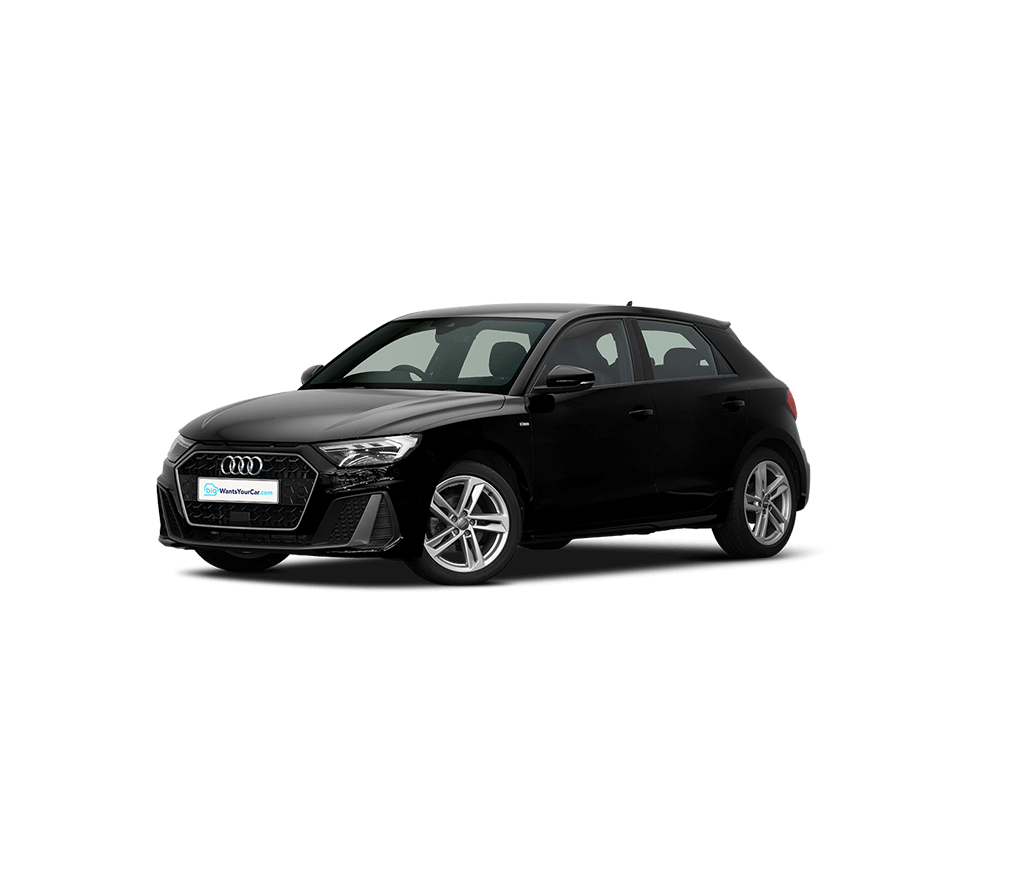November 21st, 2024
How Much Does It Cost to Replace a Brake Disc?
Posted By: BigWantsYourCar
Extra £150 on top of your valuation when you upload pictures of your car within 24 hours**T&Cs apply

The supermini market is packed with options, but two standouts with serious style are the Volkswagen Polo and the Audi A1. They may look different on the outside, but under the hood, they’re practically twins, sharing almost the same mechanical foundation. Now, the pressing question is: which upmarket urban runabout truly deserves your hard-earned pennies? Let’s delve into the details and find out.
Key Takeaways
When it comes to cars, interior quality and practicality play a vital role in determining the suitability for your needs. In the case of the Polo and the A1, both being in the more premium segment, an expectation for a plush cabin exists at this price point. And when it comes to experiencing opulence in a supermini, the Audi A1 sets the bar high.
This refinement level is expected from a brand renowned for its meticulous assembly of centre consoles. While the Polo certainly is good in terms of quality, finding a cabin that can rival the fit-and-finish of the A1 would require moving up to the class above.
However, material quality is only part of the equation; practicality is also a key consideration. While superminis may not offer abundant space, it’s worth considering. The three-door A1, for instance, only provides rear seats for two, whereas the Polo’s back bench comfortably accommodates three passengers. To achieve a similar seating arrangement in the Audi, upgrading to the five-door Sportback specification would be necessary.
Upon its launch in 2010, the A1 paled in comparison to larger Audi models such as the A3. The car had a mixed appeal – it looked good but left you yearning for that authentic Audi exterior that comes with a slightly higher price tag.
Fortunately, over a decade later, the A1 has truly evolved into a stunning car. Resembling a miniature A3, it has shed the “flat” shape that plagued the previous model. The current A1 boasts sleek, angular lines that exude a premium feel, and it’s no surprise that some people are drawn to the car purely for the four rings on its grille.
In contrast, the Polo has remained largely unchanged over the years. Whether this is negative or not is subjective, as many still appreciate the Polo’s conservative styling.
However, it wouldn’t be unfair to describe the Polo as a somewhat unexciting-looking car. In this comparison, there has to be a winner, and without a doubt, it’s the Audi A1.
The A1 truly stands out in its class and takes design risks. It carries the appearance of a premium car, while the Polo’s design is beginning to feel stagnant. It may be worthwhile for Volkswagen to take note of rival manufacturers who have significantly enhanced the exterior aesthetics of their relatively affordable cars, such as certain lower-tier Ford models, like the Fiesta.
Both Audi and Volkswagen have a well-deserved reputation for producing cars that are enjoyable to drive. When you think of Audi, you may envision the powerful RS3, while the Volkswagen Golf Type R is often associated with the hot-hatch category. But how do these two small cars actually perform on the road?
In terms of handling, both the A1 and Polo excel. They are nimble and agile in city driving and provide a confident feel on the motorway. It’s a draw in this aspect, as both cars deliver a satisfying driving experience.
However, when it comes to engines, there is a difference. The A1 offers four petrol engine options, each with its own merits. The more affordable choices, like the 30 TFSI, provide a respectable 0-62mph acceleration time of 9.5 seconds and achieve an official fuel economy of around 59.8 mpg. If you desire more performance, there are options like the 40 TFSI, which is faster but has lower fuel economy and higher CO2 emissions.
On the other hand, the entry-level Polo engines are a bit underwhelming. The 1.0-litre petrol engines with 65hp and 80hp lack power, requiring you to really push the pedal to overtake confidently. However, the turbocharged 1.0-litre engine is a much better choice. It’s advisable to skip the cheaper options for better performance.
In terms of gearboxes, Audi takes the lead with a superior automatic transmission. The Polo’s seven-speed auto gearbox can be a bit hesitant at slow speeds, while the A1’s automatic gearbox provides a more consistent and smoother experience. When it comes to manual transmissions, the A1 offers a great six-speed manual gearbox, whereas the Polo only has a five-speed option.
Regarding suspension, the A1 offers a more comfortable ride. It feels notably smoother in urban environments and is relaxed on the motorway, particularly aided by its excellent cruise control system. While the difference is not significant, it is worth noting that the A1’s suspension provides a slightly more pleasant driving experience compared to the Polo.
When it comes to boot size, the Polo takes the lead with its impressive capacity. With the seats down, the Polo offers a generous 351 litres of space, expanding to 1125 litres with the seats up. On the other hand, the A1 Sportback has a slightly smaller boot, providing 335 litres of space with the seats down and 1090 litres with the seats up. While the difference is not substantial, the Polo wins this category.
In terms of passenger space, the Polo excels. With Volkswagen discontinuing the three-door model, every variant now comes with five doors. The wide-opening doors make it effortless to accommodate three people in the back seats. The rear seats of the Polo offer comfortable seating for three adults, with a well-designed wide centre seat and minimal obstruction on the floor. In the driver’s seat, there’s ample room for adjustment, and it doesn’t feel far off from the spaciousness of the Golf.
The A1 is also practical for passengers, as it too is only available in a five-door configuration. Getting people into the back is hassle-free. The driver’s seat in the A1 provides excellent comfort and offers a touch more adjustability than the Polo. However, in the rear, the A1 falls slightly short with a less impressive middle seat. The cushioning here is slightly firmer than the other seats, and it may receive some complaints from whoever ends up sitting there.
Both cars make it easy to fit an Isofix child seat, thanks to their wide-opening rear seats. Overall, the Polo edges ahead in terms of practicality, thanks to its roomy and well-designed cabin.
When it comes to the purchase price, the A1 carries a list price that is approximately £3000 higher than the Polo. However, it’s worth noting that the entry-level technology offered on the A1 surpasses that of the Polo. While the price difference may not be significant when opting for a decent specification, it’s hard to nitpick about the cost disparity in this regard.
Both cars demonstrate high resale rates, although you can expect around 40% depreciation in the first three years, which is inevitable for most vehicles (unless you opt for an older, less maintained car or choose a lease deal).
In terms of running costs, the A1 and Polo are relatively similar. In real-world terms, the mid-range 30 TFSI model of the Audi A1 Sportback achieves around 50mpg. Surprisingly, the less powerful 1.0-litre engine in the Polo returns slightly lower figures, ranging between 40-50 mpg.
While the A1 offers more efficient petrol engines, it lacks variety in terms of fuel options. Unlike the A1, the Polo is available with diesel engines, which Volkswagen claims can achieve up to 70 mpg. Realistically, achieving such figures may be challenging, but the diesel Polo still offers substantially better fuel efficiency than a petrol A1.
VW takes the lead in terms of insurance premiums. The lowest insurance group for Polo is group 1, which is the lowest possible rating. Even the highest-performing Polo is only in insurance group 12. On the other hand, Audi’s insurance groups range from 9 (lowest) to 22 (highest), making it notably more expensive to insure an A1. This difference can be attributed to the A1’s more powerful engines and higher upfront cost, which presents a greater risk for insurance companies.
Both the Polo and A1 have no major reliability concerns. As long as they are regularly serviced and properly maintained, they should provide trouble-free ownership.
For warranty coverage, both Volkswagen and Audi offer a standard two-year unlimited mileage warranty. In the third year, there is a limit of 60,000 miles.
The pricing for the sixth-generation Polo remains consistent, with options ranging from £18,000 to £25,000 for the five-door body style. The available trim levels include ‘SE,’ ‘Sport,’ and ‘S line,’ with the latter offering a more dynamic appearance. The ‘S line Competition’ trim is exclusive to the 2.0 TFSI 200PS engine variant and features striking twin tailpipes for added purposefulness. Buyers have the freedom to choose from ten colours, with the option to combine them with contrasting roof colours, exterior mirror housings, side front spoiler lips, and side sills.
In summary, while the improved sixth-generation Polo represents a step forward from its predecessor, it retains the core appeal that sets it apart from rivals. Opting for a Polo suggests a deliberate choice to drive a small car, driven by a desire for quality and class. This little supermini is more than capable of meeting those priorities, offering an extra touch of refinement and a superior driving experience. If you value these qualities and seek a small car with an exceptional level of quality, the Polo is a compelling choice.
November 21st, 2024
Posted By: BigWantsYourCar
November 13th, 2024
Posted By: BigWantsYourCar
November 11th, 2024
Posted By: BigWantsYourCar
October 1st, 2024
Posted By: BigWantsYourCar
September 20th, 2024
Posted By: BigWantsYourCar
September 16th, 2024
Posted By: BigWantsYourCar
September 15th, 2024
Posted By: BigWantsYourCar
September 3rd, 2024
Posted By: BigWantsYourCar
Get a free valuation today
Value my car